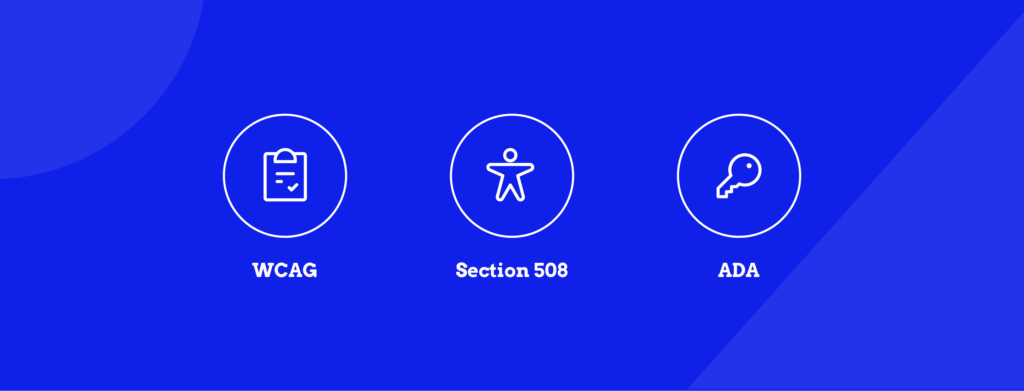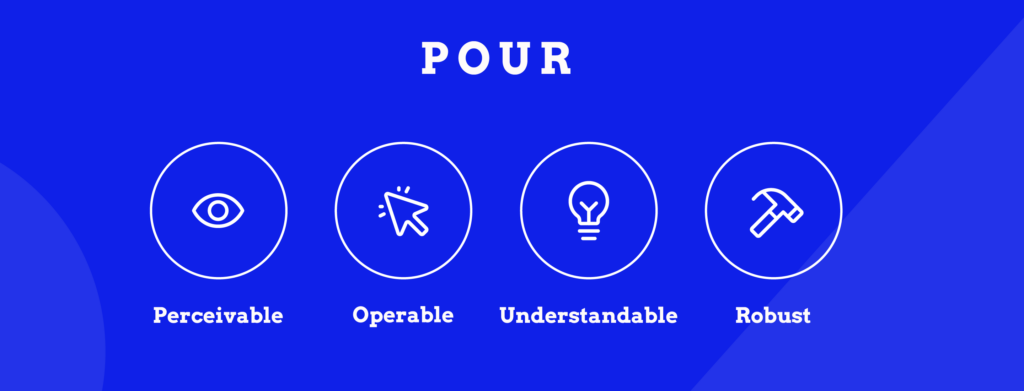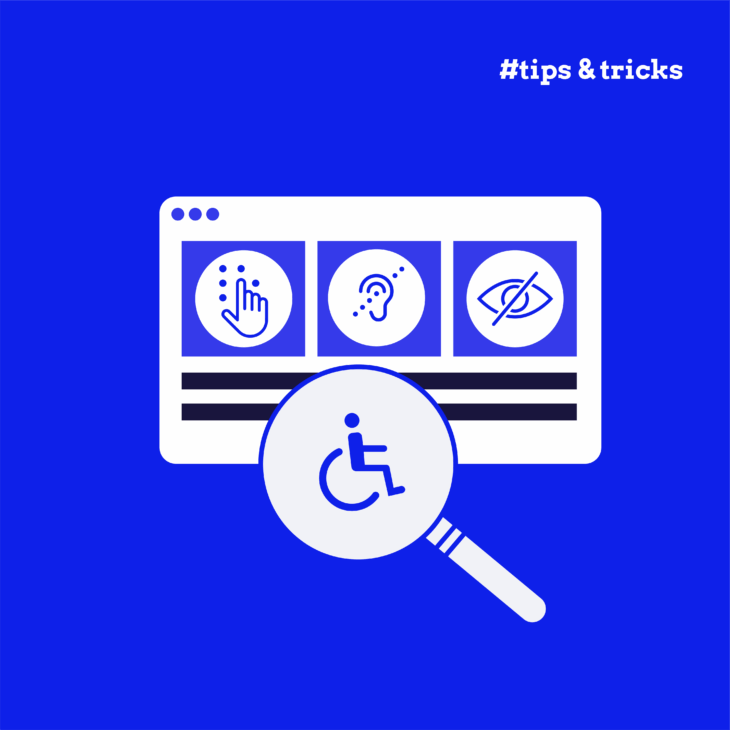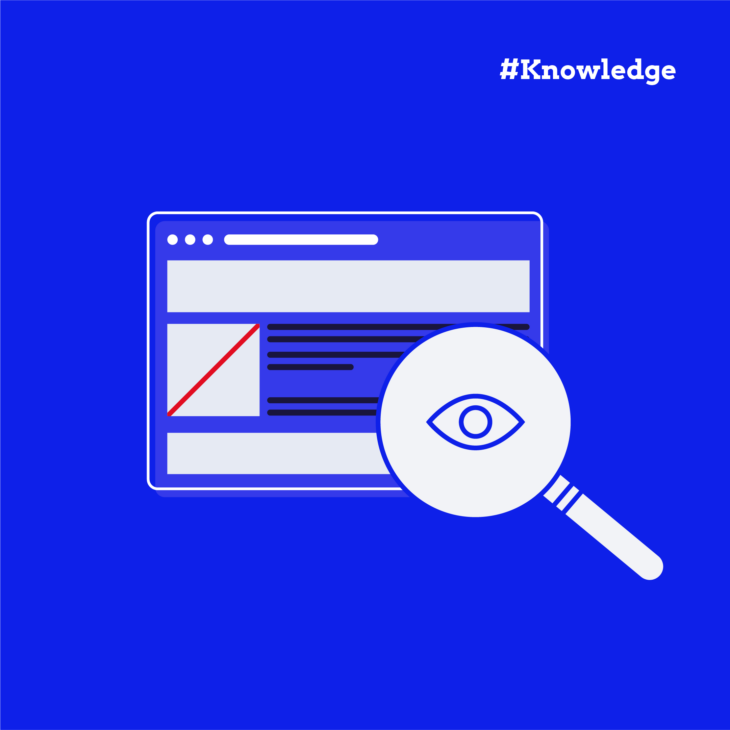Taeke Reijenga has extensive experience with the business side of Web Accessibility. As CEO of the full service digital agency Level Level, he has managed in a short amount of time to get his entire team on board when it comes to including web accessibility in their workflow.
Have you ever encountered the terms WCAG, Section 508, or ADA and wondered what they mean? When it comes to web accessibility, these regulations and guidelines are used to make sure websites and digital content are accessible to everyone, including people with disabilities.
In this guide, we will decode these terms and explore their significance in creating an inclusive online experience for everyone.
WCAG, Section 508, and ADA: key differences at a glance

Let’s clear up the confusion right away. Here’s how these actually relate to each other:
| Attribute | WCAG | Section 508 | ADA |
|---|---|---|---|
| What it is | Technical guidelines for making websites accessible | Federal law for U.S. government digital accessibility | Civil rights law prohibiting discrimination |
| Created by | W3C (World Wide Web Consortium) | U.S. Congress (1973, updated 2018 to align with WCAG) | U.S. Congress (1990) |
| Who must comply | No one technically (it’s guidance), but widely adopted | U.S. federal agencies and contractors | All U.S. businesses open to the public |
| Scope | International standard | U.S. federal government | All of U.S. (private and public sectors) |
| What it covers | Specific technical requirements (contrast ratios, alt text, keyboard navigation, etc.) | Federal websites, apps, documents, and IT | Employment, public accommodations, transport, telecoms |
| The standard used | IS the standard (Levels A, AA, AAA) | References WCAG 2.0 Level AA | Courts often reference WCAG 2.1 Level AA |
| Penalties | None directly | Loss of federal funding, lawsuits | $55,000-$150,000 per violation |
Did you know? All three work together: WCAG provides the “how-to” technical standards, Section 508 mandates these standards for federal agencies, and the ADA requires accessibility more broadly, with courts using WCAG as the measuring stick.
The simple relationship
- WCAG = The technical blueprint (how to build it)
- Section 508 = Federal government’s rulebook (must follow WCAG)
- ADA = The overarching law (you must be accessible, and WCAG shows you how)
Quick answer: Meeting WCAG 2.1 Level AA generally satisfies both Section 508 and ADA requirements, making it your best target for compliance across the board.
Unpacking the WCAG
The WCAG, created by the W3C’s Web Accessibility Initiative, aims to make the internet more accessible, specifically catering to individuals with disabilities.
The core philosophy of WCAG revolves around four principles, encapsulated in the acronym POUR:
- Perceivable: Making sure that all users can perceive content is vital. This involves giving options for non-text content and making information accessible to everyone.
- Operable: Users must be able to interact effectively with the website by ensuring that user interface components and navigation are operable.
- Understandable: The online experience should be made understandable for all through clear information and a user-friendly interface.
- Robust: Creating robust content that can be understood by various user agents is important in promoting flexibility.

The WCAG is categorised into three conformance levels: A, AA, and AAA. Each level builds upon the previous, with AA being the most widely accepted. It creates a balance between high accessibility standards and achievable success criteria, making it the preferred benchmark for accessible websites.
💡 If you’re looking for more information on the different levels of the WCAG, The A11y Collective offers a comprehensive guide on A, AA, and AAA conformance.
Section 508 explained
Section 508 is part of the Rehabilitation Act within the U.S. federal law and mandates that federal agencies make sure information is always readily available for employees and members of the public with disabilities.
Largely addressing digital accessibility concerns across various electronic communications, it mainly targets public-facing websites and apps, internal and external emails, telephones, call centres, PDFs, and other documents, as well as digital training resources.
To meet Section 508 requirements, federal agencies must adhere to explicit accessibility standards. These standards closely align with the WCAG, which means that conforming to WCAG A and AA standards is an effective initial step for agencies aiming to comply with Section 508.
⚠️ Compliance with Section 508 is mandatory for federal agencies and departments. Failure to adhere to these standards can result in formal complaints or civil lawsuits.
Breaking down the ADA
The ADA is a civil rights law fighting for the rights of individuals with disabilities by prohibiting discrimination across various aspects of life, including:
- Employment.
- Public accommodations.
- Transportation.
- Telecommunications.
While the ADA mandates digital accessibility, it doesn’t prescribe specific technical standards for websites. Recognising this, the Department of Justice recommends that businesses assess their digital content against established benchmarks like the WCAG and Section 508 requirements.
📋 Need some guidance? The A11y Collective offers a practical checklist, helping businesses with the essential steps to ensure ADA compliance.
Websites and online services within the domains of employment, public accommodations, transport, and telecommunications are obligated to comply with the ADA. Non-compliance can lead to substantial penalties, with fines ranging from $55,000 to $75,000 for the initial violation and $150,000 for each subsequent offence.
Next steps to improve your website’s accessibility
When it comes to website accessibility, knowing the rules and regulations will help to create a better online environment. Along with this, you will avoid any legal complications that could crop up over time.
Adhering to relevant accessibility legislation ensures legal compliance and transforms your website into a truly inclusive space for all users.
Don’t worry if making your website accessible seems overwhelming due to the standards and requirements. The A11y Collective is here to help you through this process by providing expert courses on web accessibility that simplify the complexities and offer practical insights and actionable steps.
Boost your understanding and implementation of accessibility standards by starting with the A11y Collective’s expert courses today!

Learn how to make websites accessible for everyone.
Begin by understanding and applying accessibility laws and WCAG guidelines.






